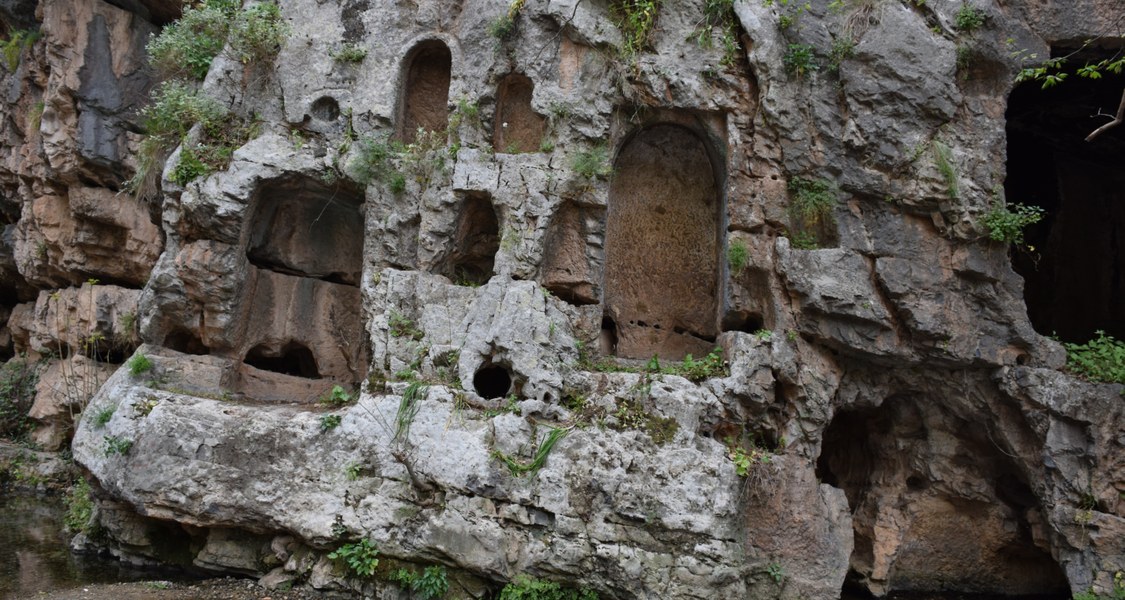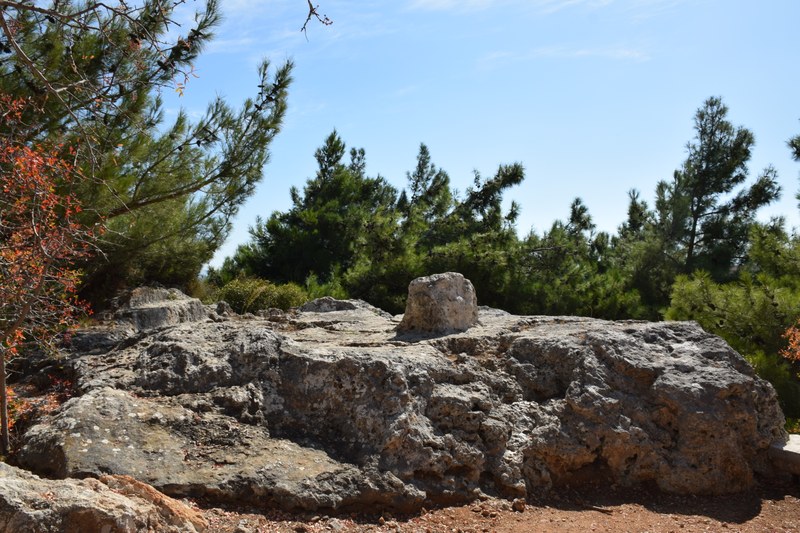Main Content
Greek Rock and 'Nature Sanctuaries'. Investigation into the meaning and role of natural paintings and spaces in Greek sanctuaries

Dissertation project: Mirja Biehl
The share of nature and its role in Greek sanctuaries and cults has so far been neglected and given less attention in research in favour of a focus on architecture. Although individual studies are available for various natural features and spaces (e.g. trees and caves), these have not yet been brought together for an overarching comparison in a comprehensive analysis.

The aim of my dissertation project is to close this research gap and to work out the role of nature in places of worship and cults, using the examples of rocks, springs, trees, groves and caves, which have a special role and significance in sanctuaries. Since there is no comprehensive study of rocks in sanctuaries and cults or rock sanctuaries, I will work on these in my paper in order to be able to analyse and classify nature in sanctuaries in an overall comparison.
The following aspects will be specifically investigated on the basis of natural monuments and spaces, cults and sanctuaries through the evaluation of archaeological, literary and epigraphic sources, whereby theories of religious studies will also be included and applied:
- The nature of the spatial integration of nature in sanctuaries.
- The connection with various rites, sacrificial acts and also votive offerings.
- Basic cult role of nature: Can one determine a worship of nature in these sanctuaries or does nature serve as a cult object?
- Other functions in cult sites, for example as altars for ritual acts, medial to gods as found in the oracle cult (for example the oak in the Zeus sanctuary of Dodona) or also idealistic (for example as a memorial such as the olive tree of Athena on the Acropolis).
- Are previous generic terms and auxiliary designations legitimate and adequate to grasp and describe the relationship between nature and cult (nature sanctuaries and nature cult)? And what is the specific relationship to the formulations 'sacred rocks', 'sacred springs' and 'sacred trees'?
- Personification of nature and its cults in sanctuaries. What is the relationship between nature and specific gods and their cults?
- Correlation of 'nature sanctuaries' and 'nature gods': Are only corresponding gods ('nature gods') or also other gods worshipped in these sanctuaries?
- In general, the special treatment of nature in sanctuaries, linked to the idea of untouchedness, inviolability and protection. Is there evidence of regulations of handling in the context of a sacred association with nature to protect against interventions and changes to nature?
The study concentrates on the period between the Archaic and Hellenistic periods and geographically places the focus of the cult sites on the Greek mainland and the islands. However, specifically with regard to rock sanctuaries, a comparison will also be made with the cult sites in Asia Minor, as this group of sites plays a greater role regionally and the relationship between rock and cult also has a special position, for example the sanctuaries of Cybele in Phrygia and Ionia.